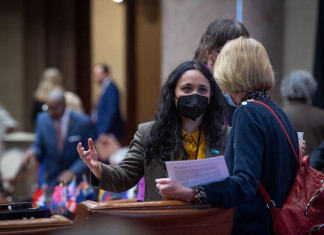“… Our harvest being gotten in, our governor sent four men on fowling, that so we might after a special manner rejoice together…”
– From a letter by Edward Winslow, dated Dec. 12, 1621, describing the first Thanksgiving

Bob Becker, 73, has fond memories of those times, and of this particular season when bird-hunting took flight.
“My mother loved pheasant,” he said, savoring the way she would roast the three-pound roosters he would bring down — then home — with his double-barreled 12-gauge L.C. Smith shotgun.
“I bought the gun from Doc Vigeant in the summer of 1953 for $40. (Dr. Joseph E. Vigeant was Red Hook’s trusted physician for more than 50 years.) He was quite a hunter. He wanted to sell me his 35-caliber Remington automatic, too, but it was so worn you couldn’t cover two shots from 50 yards with a pie plate!”
A lifelong outdoorsman, expert hunter and fisherman, Becker lived with his older brother Glenn, sister Alice and parents on Prince Street, a block over from Dr. Vigeant, on West Market Street. Doc kept roses and made cherry bounce, a kind of liqueur, with cherries from the trees in his garden.
“The real reason Doc had the shotgun was for the blackbirds. He couldn’t have them stealing his cherries. He’d fire away and the shot would rain down on our roof and on our neighbor’s, Mrs. Miller, too,” Becker recalled.
“Then she would call Officer Martin (longtime village policeman). Jim would arrive, huffing in the heat, knock on Doc Vigeant’s door, go in and come out a half-hour later, his face redder than when he went in. Doc never made the front page of the Red Hook Advertiser — thanks to the cherry bounce,” Becker said with a smile.
“Gus Hyde raised 200 pheasants a year on Fraleigh Street for the Red Hook Rod and Gun Club, and we would set them out — one rooster and six hens in the spring, for natural propagation, and 75 roosters in the fall — on all the farms around.
“There was lots of wild feed, as well as corn, and plenty of places for nesting — in the brush lines and cattail swamps. There weren’t any bobcats, or coyotes, and the farmers protected their chickens from hawks, so there weren’t many predators,” Becker recalled.
Although pheasant season was brief — the last two weeks of October — the Rod and Gun Club always put on an annual “landowners’ dinner” at the VFW hall on Elizabeth Street as a thank you.
Becker paused, remembering the closeness “we shared with the farmers.”







Facebook Comments